With Atelier Yumia: The Alchemist of Memories & the Envisioned Land, a brand-new arc in the Atelier series has started. This series by developer Gust has always intrigued me, be it through its charming cast of characters or its compelling story and systems. My interest first came about when I saw Atelier Escha & Logy: Alchemists of the Dusk Sky on sale on Steam many years ago.
Ever since then, I’ve been itching to try and get into the Atelier games, but for personal reasons, I just never found the itch to play through an entire arc. Given that Atelier Yumia is being marketed as one of the most accessible entry points in the series, and indeed, many of my friends have been telling me this might be the best entry point we’ll ever see in years, the question becomes: is Atelier Yumia primed to be the perfect starting point?
The Forbidden Technique

Our story in Atelier Yumia begins with the titular Yumia, a fledgling alchemist. After a mysterious incident caused the fall of the Aladissian Empire, alchemy has become a taboo technique across the world. This unfortunately resulted in a tense atmosphere where everyone now views alchemists with great disdain, fearing their powers may invite the calamity once more. However, the commander of the Aladiss Research Team has decided to recruit Yumia to use her alchemist knowledge to assist them in finding the truth behind that incident, so that they can understand what exactly happened.
The story makes it abundantly clear that the main focus of the game is exploration above all else. The introduction scenes and quests felt super weird in my opinion, and sometimes character interactions feel like you’re expected to already know what’s going on. For instance, there is a Research Team NPC that says “You do know why I hate you, right?”, which is a weird rhetoric question to ask someone you’re technically meeting for the first time.
It’s also possible to trigger multiple cutscenes back to back from a single location. At first, this didn’t bother me, but it did not take long until the game started playing a cutscene that was seemingly unrelated to the plot at hand, which can break off the immersion a bit. Furthermore, in the overworld, characters will constantly comment on the items you obtain, and whenever you enter a new area. This can get extremely repetitive, even as you get new party members later in the story. Yes, Viktor, you’ve already told me you’ve seen this ore in a book a dozen billion times, you don’t have to tell me again.
One of the aspects I most liked about the story in Atelier Yumia is the way it introduces this sense of discovery. Yumia has a curious personality that players can relate to, and there are a lot of questions that you seek answers for revealed: Why is alchemy a taboo? What exactly caused the calamity? Though somewhat strange in presentation at times, I found the story a good read, even if it takes a couple of hours until the next narrative point.
It’s a Vast World Out There

One of the main points about Atelier Yumia is the massive open world, perhaps one of the biggest in the Atelier series thus far. The entire gameplay loop revolves around the Pioneer system. To progress further into the main story, you’ll be asked to do a series of tasks, which will in turn, increase your percentage. There is no particular time limit, or even a strict order of things you must do.
Scattered across the world are also dangerous areas known as Manabound Areas, where the flow of mana is too stagnant for the human body to handle. Luckily, thanks to her Energy Core, Yumia is able to walk through these areas for a limited time. The objective is to find that area’s Circulator, where she must use her powers in order to stabilize the flow of mana of the given area, further expanding the reach of the Research Team.
There are many instances where the story attempts to prevent itself from feeling too linear by giving the player choices on which of the areas they can explore next, and perhaps the only thing that will prevent you from exploring these later areas will be the enemy levels, and your Energy Core reserves.
Just by opening your map, you’ll instantly notice the question marks everywhere. These can range from towers that can add new fast travel spots, campsites, and even ziplines that can connect from one place to the other. You’ll also find Treasure Troves, which require specific keys that can be found inside chests. If you’re a curious type, you will definitely enjoy exploring this vast open world.
That said, the in-game tutorials leave much to be desired. It will constantly interrupt you, and worse, it obligates you to do the actions exactly, and I mean, exactly as it asks you, which doesn’t feel dynamic or immersive at all. Additionally, the tutorial leaves out a lot of the game’s aspects, and it feels very perfunctory.
The Synthesis System

As a friend of mine once said, you cannot have an Atelier game without the Synthesis system. In Atelier Yumia, you can craft items and weapons from your atelier, which in turn can be used by your party members. To synthesise an item, you must first activate what are known as Alchemy Cores with a specific Core Item.
Then, a series of spheres will appear around the item, and you must insert other materials that can resonate well with them. Besides the Core Item, you can choose pretty much anything, though the game will guide you on which items resonate the best with that specific core. Once you’ve activated at least one Core, the process can begin.
This is, admittedly, one of the aspects the tutorial fails to explain properly, because as you progress in the main story, more and more Cores will be added, adding to the complexity of the Synthesis. It is vital to understand this system if you want to craft the best items, even if you use the Auto-Fill option to sort of automate most of the process.
Outside the Atelier, Yumia can also use her Energy Core to craft smaller items such as bullets, repair kits, and other useful items you can use in the overworld. These items get stored in her basket, which has a limited amount of space, and certain items can only be stacked up to a certain amount.
The Synthesis system starts off simple, but as you progress through the story, features are added to it. This includes different buffs you’re able to utilize to help increase an item’s quality to even a feature called Item Rebuild, where you essentially take an item and basically redo its synthesis process. By inserting higher-quality ingredients, you’re able to essentially improve it.
Real-Time Action

The battle system is also completely different from past Atelier series. Instead of a turn-based system, Atelier Yumia is more akin to an action RPG, where running into an enemy will essentially create a type of field, divided into inner and outer rings. There are four abilities that each character can use, mapped to the face buttons. Pressing R1 will switch the screen to the alchemy tools that Yumia can craft for all party members.
In the overworld, you can even use Yumia’s rifle to shoot down an enemy’s defenses and enter combat with them already stunned, dealing a debuff to all their stats. Later in the story, you can also unlock Friend Actions, where Yumia can coordinate with other party members to unleash a powerful attack together against stunned enemies. Furthermore, pressing R2 plus Triangle or Square (on PlayStation 5) will allow you to switch to a party member, allowing you to use a variety of skills to masterfully exploit enemy weaknesses.
There are four difficulties to choose from when you first start up the game: Easy, Normal, Hard, and Very Hard. What exactly changes between the four is the HP that monsters have, which you can check by shooting Scan Bullets at them. One major gripe I had with the battle system is how there seems to be this weird delay in terms of how some characters dodge the attack, almost as if they’re locked into place until their animation concludes. I’ve only had this happen twice, but even then, it felt weird, almost reminiscent of playing an online game with high connection lag.
Beautiful Graphics, Weird Lightning

On the PlayStation 5, Atelier Yumia looks stunning when it comes to graphics. The character expressions are very expressive, and the art style looks really cute. My only gripe is how, depending on when you watch certain cutscenes, there’s this bloom effect that can get really distracting, and sometimes, you can see a weird blur on character faces. You can sort of get around this by messing with the graphics settings, though when it comes to the “out-of-box” experience, where you just load the game with the defaults, I feel Gust could’ve handled this a bit better.
Furthermore, the English translation also leaves a bit to be desired. It’s not bad by any means, though there are many sentences that just sound extremely awkward, almost as if they were translated too literally from the Japanese script. This is also the first Atelier series title to support a variety of languages on release, such as German, Spanish, and Russian. Sadly, there is no English dub option, making this the ninth year since Gust stopped adding the option.
Regarding replayability, Atelier Yumia will be able to provide you with over 50 hours of content. Perhaps even more, depending on how much time you want to spend exploring the continent. Seriously, the amount of time you can spend chasing every single question mark on that map is bound to take hours. It is definitely worth it though, as the game will reward you with lots of ingredients to make stronger weapons and destroy your enemies.
An Open-World Atelier
Atelier Yumia: The Alchemist of Memories & the Envisioned Land feels like a match made in heaven. Exploring the world with Yumia, collecting all sorts of materials and slowly unveiling the truth behind the memories of the fallen civilization is a ton of fun. There’s a lot to do that can possibly make you get engrossed for hours on end, and it is perhaps a great starting point if you’ve never played an Atelier game before.
Admittedly, there are a couple rough creases here that need some addressing, with the lightning issue and some systems definitely needing a bit more polish, but overall, this is the best chance you’ll get if you want to get into the Atelier series of games. If you’re a fan of the open world genre, this will definitely appeal to you that much more.
Disclaimer: Koei Tecmo provided Final Weapon with a PlayStation 5 copy of Atelier Yumia: The Alchemist of Memories & the Envisioned Land for review purposes.


